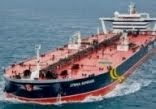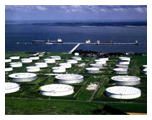Norway' s minister of petroleum and energy, Tord Lien, has officially opened Statoil’s new research center for improved oil recovery (IOR) at Rotvoll in Trondheim, mid-Norway.
“For several decades Statoil has been highly instrumental in technology development on the NCS and is among the companies with the highest recovery rate. Today’s opening of Statoil’s IOR center is significant for the future of the NCS, and illustrates that Statoil wants to contribute to optimal use of NCS resources also in the future,” Lien said.
The IOR center, which has a price tag of $39 million (NOK 240 million), will be the largest of its kind in Norway and one of the most advanced in the world. Its goal is to develop technologies that will lead to a further increase of the recovery rate from the reservoirs, and to reach the ambition of a 60% recovery rate on the NCS.
Statoil has already approved measures that give the company and partners reason to expect an oil recovery rate above 50% on the NCS. A recovery rate of 50% represents an increase of 7.5 billion barrels based on the 30% estimate of the plan for development and operation -- corresponding to more than two Statfjord fields. The global average is currently 35%, according to the ministry of petroleum and energy.
The main contributing factor to improving recovery is the drilling of new wells and the maintenance of existing wells. The IOR center will play a key role in Statoil’s efforts to improve the efficiency of drilling operations.
The IOR center will focus on improved recovery from all types of reservoirs on the NCS -- old and new. Statoil will also use the technology to improve recovery on its international fields.
The heart of the center is a new industrial scanner, which boasts a resolution 500 times higher than a medical scanner. The scanner will allow Statoil to follow the oil movements and flows in various rocks on pore level. Through high-resolution 2D and 3D images it will be possible to see which IOR method is best suited in each reservoir, and, at the same time, get a deeper understanding of how the reservoir is formed with regard to clay, pore size and cracks.
“Our next goal is the oil which is difficult to extract. We have a steep learning curve ahead of us, which will be tougher for every percentage point we achieve, but these volumes are of high value to us. A dedicated IOR lab gives Statoil a unique opportunity to solve future IOR challenges,” said Helge Lund, Statoil’s chief executive.
Providing useful resources, articles and writings on crude oil, other petroleum products, energy and gas. By ExportGeneral Corporation and services, UK, online.

 ExportGeneral Corp is a leader in the of Nigerian Bonny Light Crude Oil (BLCO) sales market. As a privately held company, Export General Corp is committed to and is focused on delivering reliable services to all her clients.
ExportGeneral Corp is a leader in the of Nigerian Bonny Light Crude Oil (BLCO) sales market. As a privately held company, Export General Corp is committed to and is focused on delivering reliable services to all her clients.  Export General Corporation has an excellent track record of reliability in the supply of Bonny light crude oil, BLCO. We protect our buyers with 2% Performance Bond while we also expect protection from our customers with bank instrument from the world's top banks. We deliver on TTO, TTT, CIF and FOB basis.
Export General Corporation has an excellent track record of reliability in the supply of Bonny light crude oil, BLCO. We protect our buyers with 2% Performance Bond while we also expect protection from our customers with bank instrument from the world's top banks. We deliver on TTO, TTT, CIF and FOB basis.


No comments :
Post a Comment